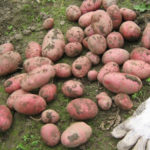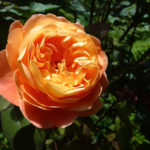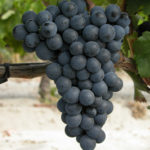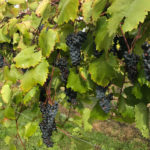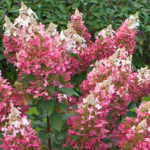Colorado spruce Hoopsie
Thorny (or blue, Colorado) spruce rightfully occupy a leading position among all the variety of coniferous garden trees. Due to their bluish tint, they are recognized beauties, and their unpretentiousness and durability significantly exceed those for ordinary European spruce. For example, Colorado spruces tolerate urban gas pollution better, because they have a special wax coating on the needles, which protects the tree's body from harmful chemical effects.
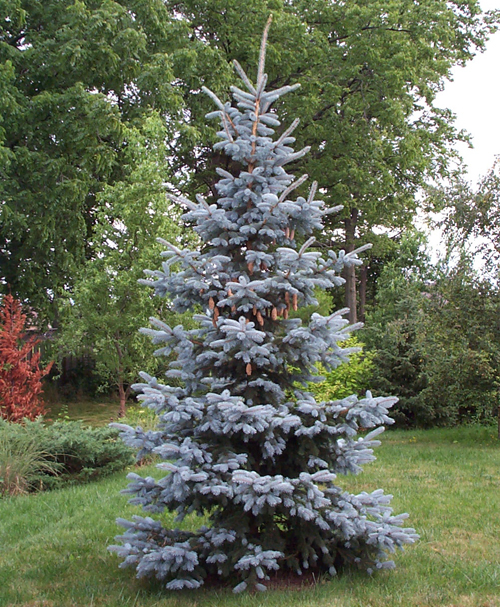
But among all the blue spruce there is the blue one, surpassing the rest of its "colleagues" in this indicator. Her name is included in the title, and we will tell about her.
Origin story
Most of the reference books indicate that the specified variety was bred in 1958 in the eminent German nursery Hoops Nursery. A group of specialists worked on its breeding under the guidance of the famous breeder F.J. Grothendorst. Subsequently, the spruce was presented at the exhibition on behalf of the FJ Grootendorst company (Boskop, the Netherlands).
True, there is also information that this variety of blue spruce was found as a seedling in the first quarter of the 20th century in the United States, and was exported to Europe in 1922. Only then it was "noticed" by the Hoops Nursery specialists and started working with a new interesting variety.
Description of appearance
The works of the breeders have not been wasted! Many connoisseurs believe that the Hoopsie (Picea pungens Hoopsii) is the most popular blue spruce variety in Europe. It is distinguished by stability, predictability in development, and, as already noted, the blueness of the needles in this variety is also out of competition.
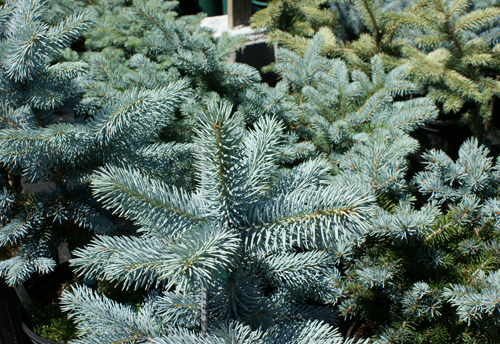
The crown of our heroine has a regular, conical shape, it is dense and looks very decorative. The growth rate is quite decent, with good care it can reach 20 cm per year. In the first years of life, the tree develops more slowly, growing by 2-2.5 meters by the age of 10, subsequently it can reach 12-15 meters, with a diameter near the ground of about 4 meters.
Light brown shoots grow almost horizontally, they are short and densely planted on the trunk. The needles are also thick, tough and prickly, covered with a wax coating. The length of the needles is 2-3 cm, they remain on the branches for up to 4 years. This nature of the shoots and needles allows the Hoopsie to hardly break from the severity of the adhered snow, which is a problem for many spruce trees.
The variety reaches its peak of decorativeness at the junction of spring and summer, when young tips of shoots with light blue fresh growth are added to the dark blue old needles. If the pinkish cones of the current year also join this picture, the spruce becomes a real decoration of the garden!
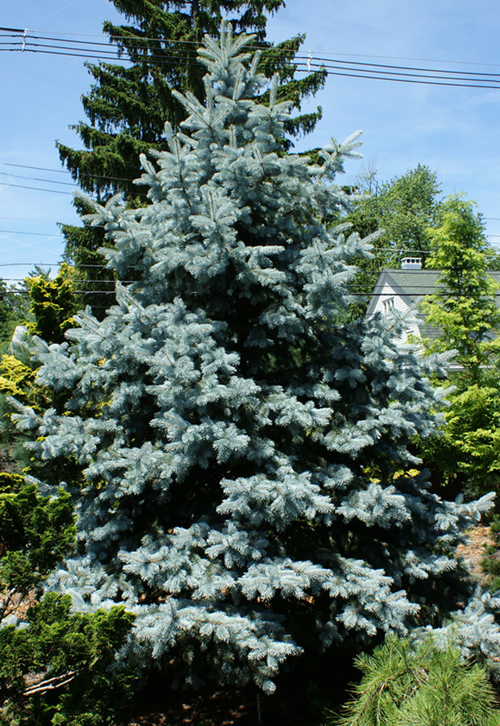
Growing features
Despite the unpretentiousness and ease of care, large specimens of this spruce are distinguished by a high price, especially when it comes to material from renowned nurseries. Why is Hoopsy so expensive? The answer lies in one feature of her agricultural technology. The fact is that in the first years of life, the tree does not have one pronounced leading shoot. Because of this, if you do not take care of the spruce, it turns into a rather shapeless and ugly specimen, rather resembling a thorny bush.
To prevent this from happening, the crown must be carefully and regularly monitored, every spring skillfully cutting off the "extra" branches striving to become leaders. Thus, the “ugly duckling” will turn into that beautiful spruce, which we described at the beginning, only after 6-8 years of painstaking care. In addition, these trees react extremely painfully to transplantation, even to a change in habitat.
For the rest, indeed, this spruce will not bring trouble to the owner, especially if it has reached the age of 10.The tree perfectly tolerates the European cold, grows superbly in open spaces, without getting sunburn, is indifferent to urban gas pollution. True, the latest information should not be taken so literally. If a city highway passes nearby, Hoopsie should be thoroughly washed with water at least once every two months.
The soil prefers well-drained, light to medium loamy, preferably regularly moistened. It will be good if the owner at least 2-3 times a year introduces complex mineral fertilizers adopted for conifers into the near-trunk circle.
Use in horticulture
Hoopsie is an exquisite and noble plant that gives the garden a special severity and aristocracy. It is often used to form a small front alley, to decorate the area in the immediate vicinity of the house. A single tree will catch the eye of your guests during the warmer months, and will turn into a magnificent Christmas tree in winter. He can be "entrusted" with the role of an accent in many landscape compositions, and the bluish needles will always look elegant, charging the entire garden with its irrepressible energy!
